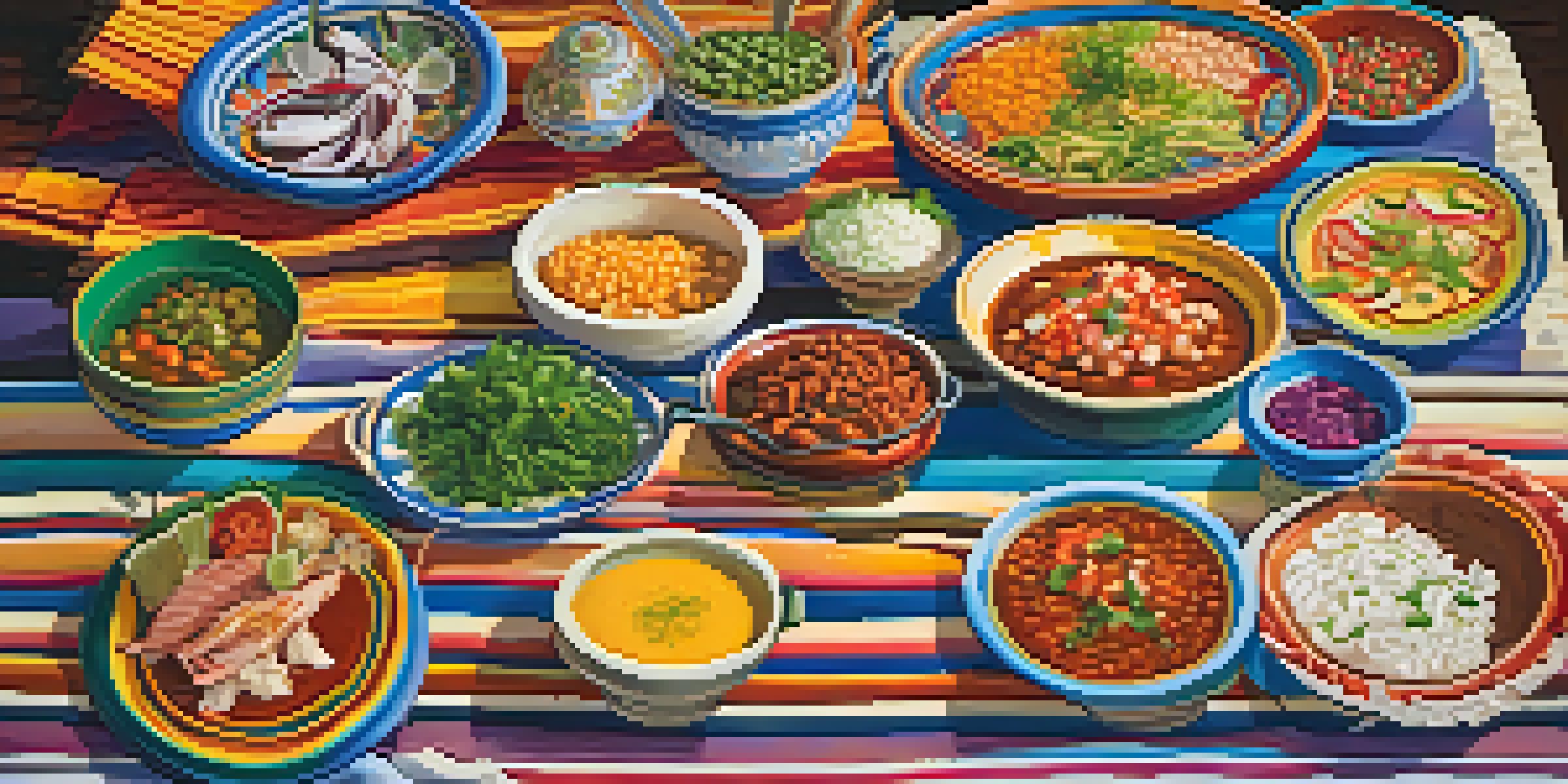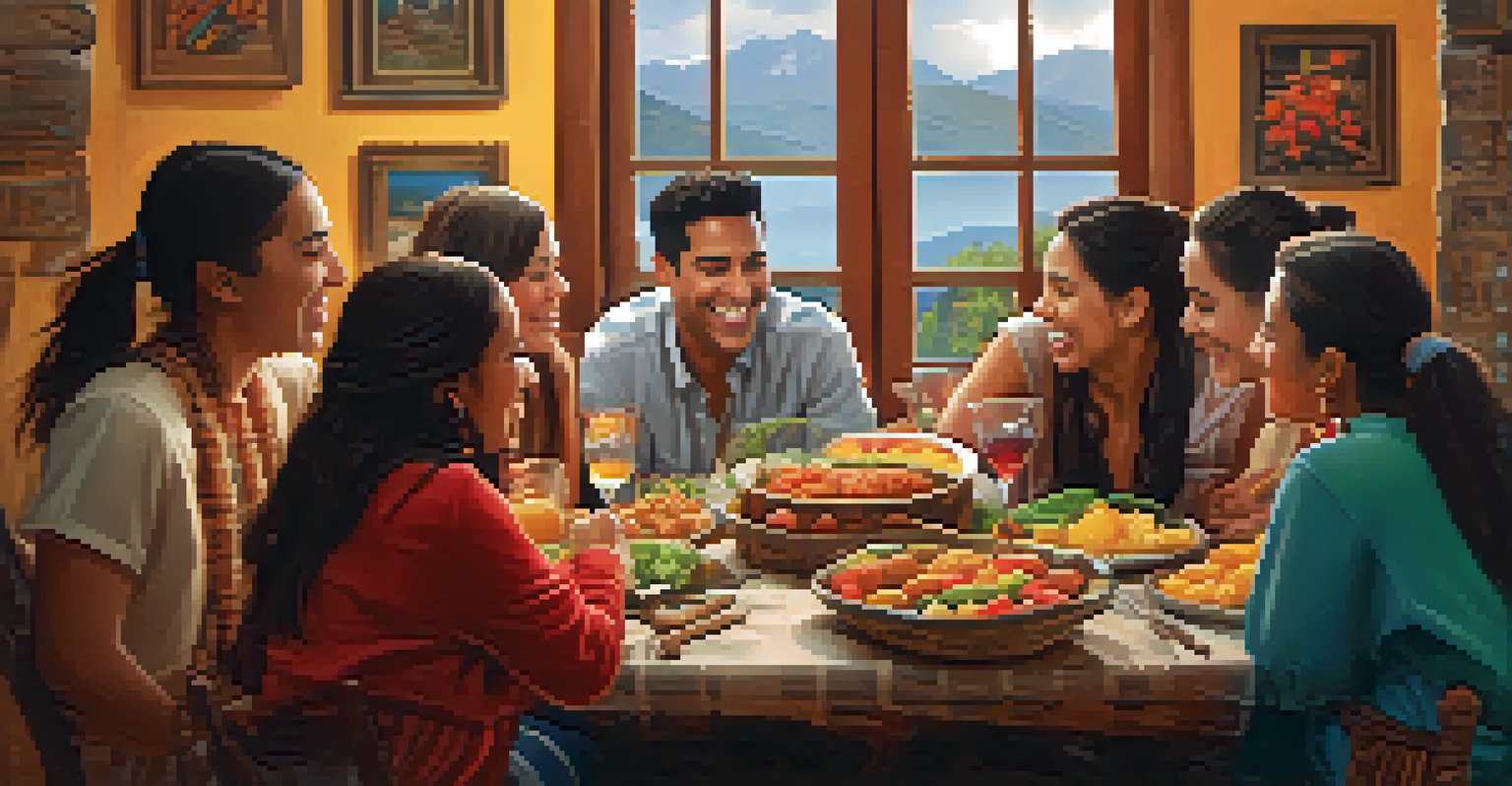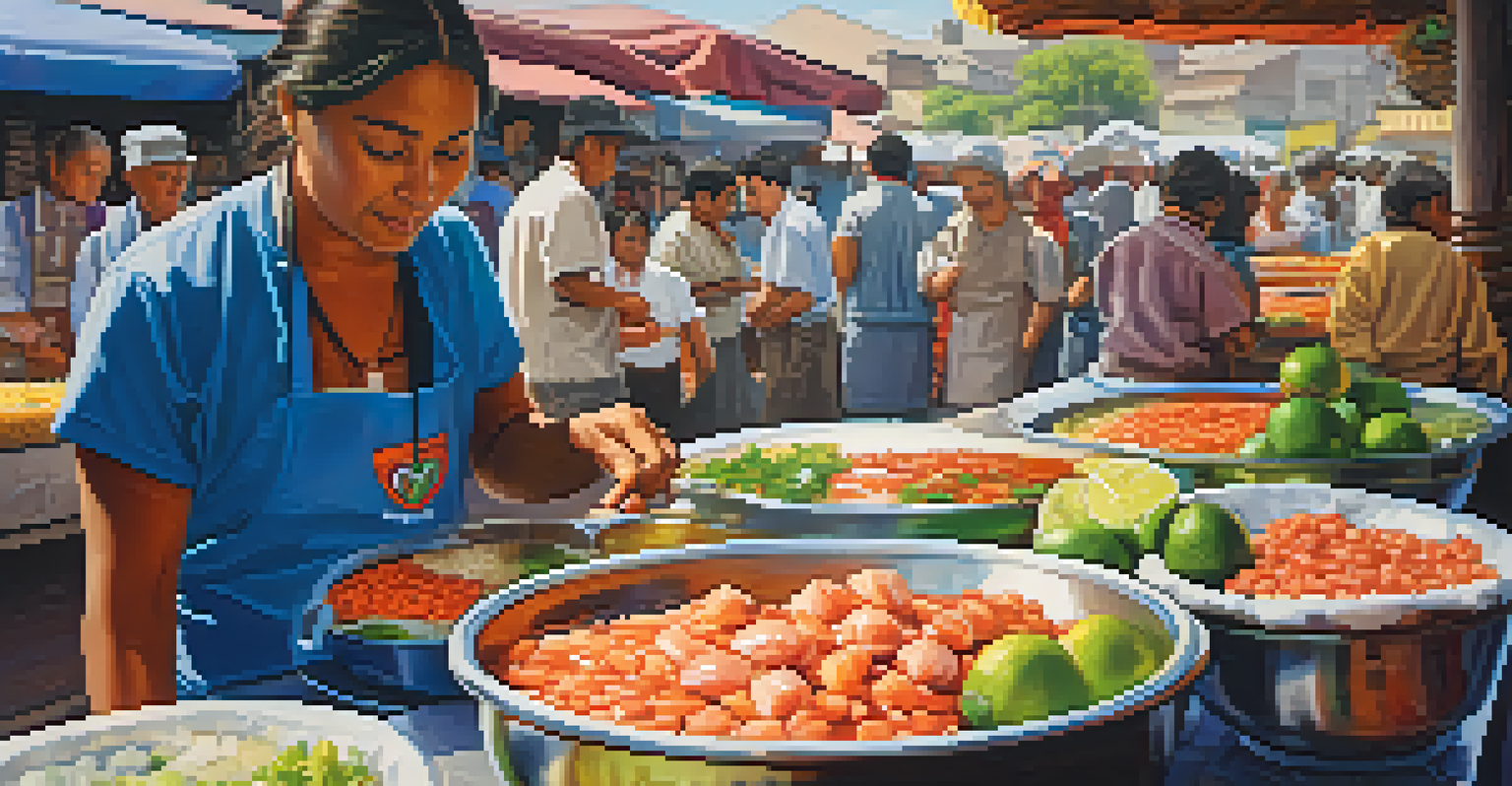Dining Etiquette: What to Know Before Eating in Peru

Understanding the Importance of Meals in Peruvian Culture
In Peru, meals are not just about sustenance; they are a vital part of social life. Sharing food is a way to connect with family and friends, often strengthening bonds and creating lasting memories. When dining in Peru, you’ll find that meals can be lengthy, filled with conversation and laughter, reflecting the importance of community.
Food is our common ground, a universal experience.
Peruvians take pride in their culinary heritage, which is a vibrant mix of indigenous ingredients and influences from Spanish, African, and Asian cuisines. This melting pot of flavors means that every meal can be a delightful exploration of Peru's history and culture. As you savor each dish, remember that you’re also partaking in a rich cultural narrative.
Understanding this cultural backdrop will enhance your dining experience. So, when invited to a meal, approach it with an open heart and a willingness to engage. This mindset will help you appreciate the significance of the experience beyond just the food.
Arriving at the Table: Punctuality and Greetings
When dining in Peru, punctuality is appreciated, but there's often a flexible approach to time. Arriving a bit late is generally acceptable, especially for social gatherings. However, for formal dinners, it’s best to aim to be on time to show respect for your hosts.

Upon arrival, greetings are essential. A warm handshake is common, and you may also encounter cheek kisses, particularly among friends or family. This gesture embodies the friendly nature of Peruvians and sets a welcoming tone for the meal ahead.
Meals Foster Connection in Peru
In Peru, sharing meals is a vital way to strengthen social bonds and create lasting memories.
Taking the time to engage in small talk before diving into the meal is customary. Sharing pleasantries and catching up with your host is part of the experience, so don’t rush into eating. Enjoy these initial moments; they are just as significant as the food itself.
Dining Settings: Understanding Table Arrangements
Peruvian dining settings can vary from casual to formal, and understanding the expected layout can enhance your comfort. In informal settings, you might find a simple table with minimal decorations, while more formal occasions may feature elaborate place settings. Being observant will help you adapt to the environment.
Cooking is like love. It should be entered into with abandon or not at all.
It’s common for the host to decide where everyone sits, so don’t be surprised if you’re assigned a specific spot. Following the lead of your host regarding seating arrangements shows respect for their hospitality. Remember, it's all part of the experience.
If you're unsure about the layout, feel free to ask your host for guidance. Most Peruvians are happy to help and appreciate your interest in their customs. This small act can also spark conversations about the various elements of their dining traditions.
Table Manners: Do's and Don'ts When Eating
Good table manners are crucial in Peru, much like in many cultures around the world. Keep your elbows off the table and remember to chew with your mouth closed. These small gestures show respect for your dining companions and create a pleasant atmosphere.
When it comes to utensils, use them properly; the knife is typically held in the right hand and the fork in the left. If you're unsure about the order of use, just observe others, especially your host. Following their lead can help you blend seamlessly into the dining experience.
Respect Dining Etiquette
Understanding punctuality, greetings, and table manners is essential for enjoying the Peruvian dining experience.
Another important point is to wait until everyone is served before starting your meal. This practice reflects consideration for others at the table. It’s a simple way to demonstrate your appreciation for the time and effort put into preparing the meal.
Tipping Practices: What to Keep in Mind
In Peru, tipping is appreciated but not mandatory. Generally, a tip of 10% is customary in restaurants, but it’s wise to check if a service charge is already included in your bill. If it is, you may choose to leave a small additional tip for exceptional service.
In more casual settings, such as street vendors or smaller eateries, tipping is less common, but rounding up the bill can be a nice gesture. This shows appreciation for the service and helps support local businesses. Remember, even small gestures can make a significant impact.
When in doubt, observe the locals or ask your host about tipping practices. They can provide valuable insights that will help you navigate the cultural nuances. Engaging in this part of dining etiquette can deepen your understanding of Peruvian customs.
Traditional Peruvian Dishes You Should Try
Peruvian cuisine is renowned for its diversity and flavor, so be sure to indulge in traditional dishes. Ceviche, a dish made from fresh fish marinated in citrus juices, is a must-try, reflecting the coastal heritage of Peru. Its refreshing taste is often a favorite among locals and visitors alike.
Another dish to savor is Lomo Saltado, a stir-fry combining marinated strips of beef, onions, tomatoes, and fried potatoes. This dish illustrates the fusion of Peruvian and Asian influences, showcasing the country’s culinary creativity. Don’t hesitate to ask your host for recommendations!
Savor Traditional Dishes
Exploring traditional Peruvian dishes like Ceviche and Lomo Saltado offers a delicious glimpse into the country's rich culinary heritage.
Lastly, consider trying Aji de Gallina, a creamy chicken dish served with rice. Each of these dishes tells a story of Peru's rich cultural history. Exploring these flavors will not only satisfy your taste buds but also deepen your appreciation for the country's traditions.
Expressing Gratitude: Saying Thank You After the Meal
After enjoying a meal in Peru, expressing gratitude is an essential part of the dining experience. A simple 'gracias' goes a long way in showing appreciation for the food and the effort your host put into the gathering. It’s a fundamental aspect of the culture that reflects respect.
If you particularly enjoyed a dish, don’t hesitate to compliment the cook. This personal touch can foster warmth and connection, and it's often met with smiles and heartfelt responses. Sharing positive feedback can also open up conversations about recipes and cooking techniques.

As you conclude the meal, it’s common to engage in further conversation, often discussing the food itself or sharing stories. This helps to round off the dining experience on a high note, reinforcing the bonds formed during the meal.